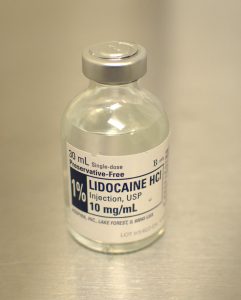Local Anesthesia
Local anesthesia has been defined as loss of sensation in a circumscribed area of the body caused by depression of excitation of nerve ending or inhibition of conduction of process in peripheral nerve.((Handbook of local anesthesia- SF Malamed 6th edition ch1 p2))
What is local anesthesia?
Local anesthesia is a mixture of some chemicals or chemical products. It helps in achieving desired numbness in the body during dental or medical surgeries to get rid of the pain. It is an important feature of local anesthesia is that to produce loss of sensation without inducing loss of consciousness. Local anesthesia is commonly used in many dental treatments like extraction, root canal treatment, minor surgeries, flap surgery and in the removal of impacted teeth.
There are many ways to induce loss of sensation in a localized area of body, it may be
- Mechanical trauma
- Low temperature
- Anoxia
- Chemical irritants
- Alcohols or phenols
- Chemical agents such as local anesthetic agents
This method of getting anesthesia in particular part of the body is transient and totally reversible.
Criteria for local anesthetic agents
- It should not cause any permanent alteration in nerves
- Not irritant
- Low systemic toxicity
- Should work on surface as well as in tissue
- Time of action should be short
- Duration of action should be enough to permit time for completion of procedure
How does it work?
To understand the mechanism of action of LA, we all should know about the physiology of nerve conduction. The function of the nerve is to carry messages for one part of the body to the brain or another part. It is carried out with help of this magical phenomenon of our body, We call them “impulses”. Impulses are generated in the body by changing the electric voltage, these are depolarization and repolarization. These potential differences are generated by some chemical like Potassium and Sodium. This entire process of depolarization and repolarization requires a total of 1 milliseconds out of which depolarization takes 0.3 msec and rest 0.7 msec for repolarization((Handbook of local anesthesia- SF Malamed 6th edition ch1 p7)). Isn’t magical, yes it is. Impulses are initiated by chemical, thermal, mechanic or electrical stimuli. Once the stimulus generated the magic of this conduction process starts through nerve fibers and message get receives by the brain or the part of the body.
Action of anesthetic agents
After understanding the nerve physiology we know that there are voltage changes like action potential, repolarizing depolarizing occurs through which the magic of nerve conduction starts. These phenomena are the basic entity of the nerve conduction. These Local anesthetic agents act on this phenomenon to alter the mechanism of nerve conduction. There are following ways to alter the nerve conduction
- Altering the basic nerve potential
- Altering the threshold potential
- By decreasing the rate of depolarization
- By prolonging the rate of repolarization

Theories for mechanism of action of local anesthetic agents
There are many theories regarding mechanism of action of LA agents
These are :
- Acetylcholine theory
- Calcium displacement theory
- Surface charge theory
- Membrane expansion theory
- Specific receptor theory
Classification of Local Anesthetic agents
EstersEsters of benzoic acid
Ester of para-amino benzoic acid
Amides
Quinoline
|
Composition of LA
| Local anesthetic agent | Lignocaine HCl 2% (20mg/m) |
| Vasoconstrictor | Adrenaline 1:80000 or Epinephrin |
| Reducing agent | Sodium metabisulphite 0.5 mg |
| Preservative | Methylparaben 0.1 % (1mg) |
| Isotonic solution | Sodium chloride 6mg |
| Fungicide | Thymol |
| Vehicle | Ringer’s solution |
| Diluting agent | Distilled Water |
| To adjust pH | Sodium hydroxide |
